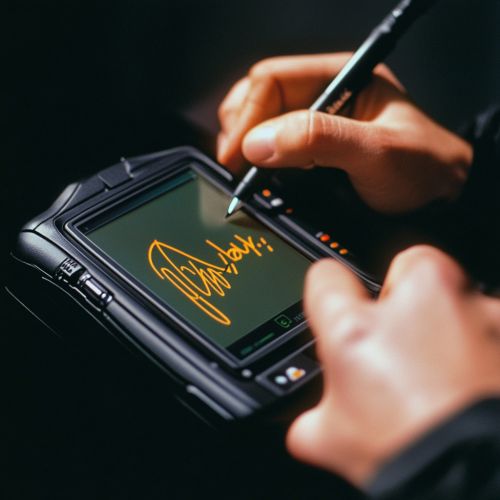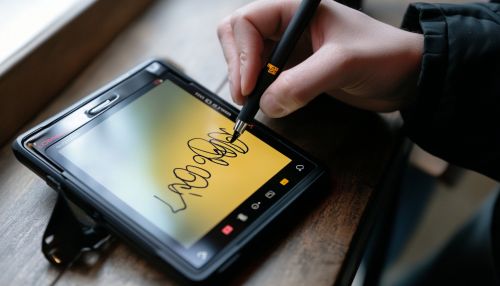Graffiti (Palm OS)
Overview
Graffiti is a handwriting recognition system originally developed for the Palm OS platform, which was widely used in PDAs during the late 1990s and early 2000s. This input method was designed to simplify the process of entering text into small devices by using a stylus to write characters on a touch-sensitive screen. Graffiti's unique approach to character recognition made it a popular choice for mobile computing at the time, offering a balance between ease of use and accuracy.
Development and History
Graffiti was developed by Jeff Hawkins and his team at Palm, Inc., a company that played a significant role in the evolution of mobile computing. The system was introduced in the early 1990s as part of the PalmPilot, one of the first successful PDAs. The primary goal of Graffiti was to address the limitations of traditional handwriting recognition systems, which often struggled with accuracy and speed.
The development of Graffiti involved extensive research into the most efficient ways to recognize handwritten input. The team focused on creating a simplified alphabet that reduced the complexity of character recognition. This approach allowed the system to quickly and accurately interpret user input, making it an ideal solution for mobile devices with limited processing power.
Technical Specifications
Graffiti's character set was designed to be intuitive and easy to learn. It consisted of a simplified alphabet where each letter was represented by a single stroke. This design choice minimized the potential for recognition errors and allowed users to enter text quickly. The system supported both uppercase and lowercase letters, as well as numbers and basic punctuation marks.
The recognition process relied on a combination of geometric pattern matching and statistical analysis. When a user wrote a character on the screen, Graffiti would analyze the stroke's shape and compare it to a database of known patterns. The system used algorithms to determine the most likely match, taking into account factors such as stroke order and direction.
User Interface and Experience
The user interface of Graffiti was designed to be straightforward and user-friendly. The input area was typically located at the bottom of the device's screen, allowing users to write characters with a stylus. The system provided visual feedback by displaying the recognized character immediately after it was entered.
One of the key features of Graffiti was its ability to learn from user input. Over time, the system could adapt to individual writing styles, improving accuracy and reducing the need for corrections. This adaptive learning capability was a significant advantage over traditional handwriting recognition systems, which often required extensive training to achieve similar levels of accuracy.


Impact and Legacy
Graffiti had a profound impact on the development of mobile computing, setting a standard for handwriting recognition systems. Its success contributed to the widespread adoption of PDAs and paved the way for future innovations in mobile technology. The system's influence can be seen in modern touchscreen devices, which continue to use similar principles for text input.
Despite its success, Graffiti faced legal challenges in the early 2000s. Xerox Corporation filed a lawsuit against Palm, Inc., claiming that Graffiti infringed on their patents for handwriting recognition technology. The case was eventually settled, but it led to the development of Graffiti 2, a revised version of the system that avoided the disputed patents.
Graffiti 2 and Subsequent Developments
Graffiti 2 was introduced as a response to the legal challenges faced by the original system. It retained many of the core features of Graffiti but incorporated changes to the character set and recognition algorithms. These modifications were intended to improve accuracy and avoid patent infringement.
While Graffiti 2 was well-received, it did not achieve the same level of popularity as its predecessor. By the time of its release, the mobile computing landscape had shifted, with new input methods such as virtual keyboards and voice recognition gaining traction. Despite this, Graffiti 2 remains an important part of the history of mobile computing, demonstrating the ongoing evolution of text input technologies.
